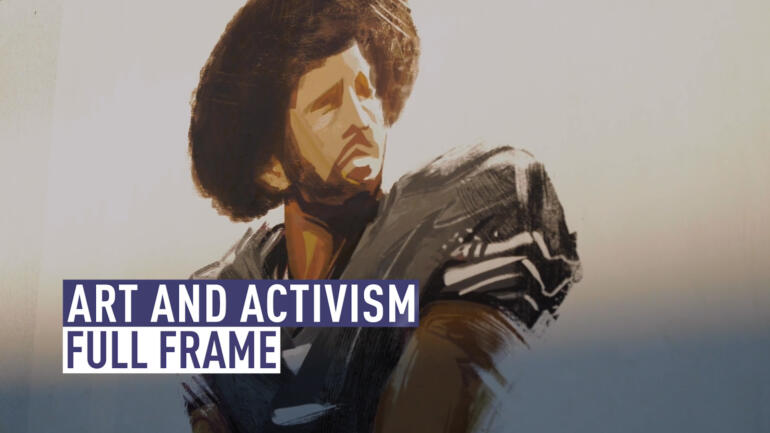Many social movements have been defined by visuals created by activists. How can art bring awareness to injustices?
Fighting Injustice as an ‘Artivist’
Los Angeles-based artist Nikkolas Smith calls himself an “artivist,” combining his roles as artist and activist. His work has appeared in books and movie posters, and posts on racism and social justice have gone viral on social media.
In 2012, Trayvon Martin, an unarmed African-American teenager, was shot and killed by George Zimmerman. Zimmerman was acquitted of the murder charge, claiming self-defense.
“I feel like if you had any sort of creativity and you were an activist, like, that was the moment to become an artist or to really combine the two and just go,” Smith said in an interview with Full Frame host Mike Walter.
Smith’s portraits of George Floyd, Ahmaud Arbery and others have launched deeper conversations about race and the way American society portrays Black people.
“I want people to see into the soul of another person who is no longer here,” he said.
The Refugee Experience
Between 1979 and 1989, 150,000 Cambodians came to the United States. Phung Hunyh’s family was part of that influx of immigrants.
Hunyh is an artist and educator based in L-A. I spoke with her about how her family history and the refugee experience helped to shape her artwork.
One of her most well-known works is her donut box portrait series. Nearly 90 percent of donut shops in California are run by Cambodian immigrants or Cambodian Americans.
“It was really about trauma and violence and refugees coming. But then the pink donut box is like, well, what happened afterwards? What happened to that narrative afterwards?” she said.
Cultural Memory
How does cultural memory shape how people perceive society today? The Cuban artist known as R10 uses graphics and images typical of Cuban history and draws a connection with the current reality.
 CGTN America
CGTN America
